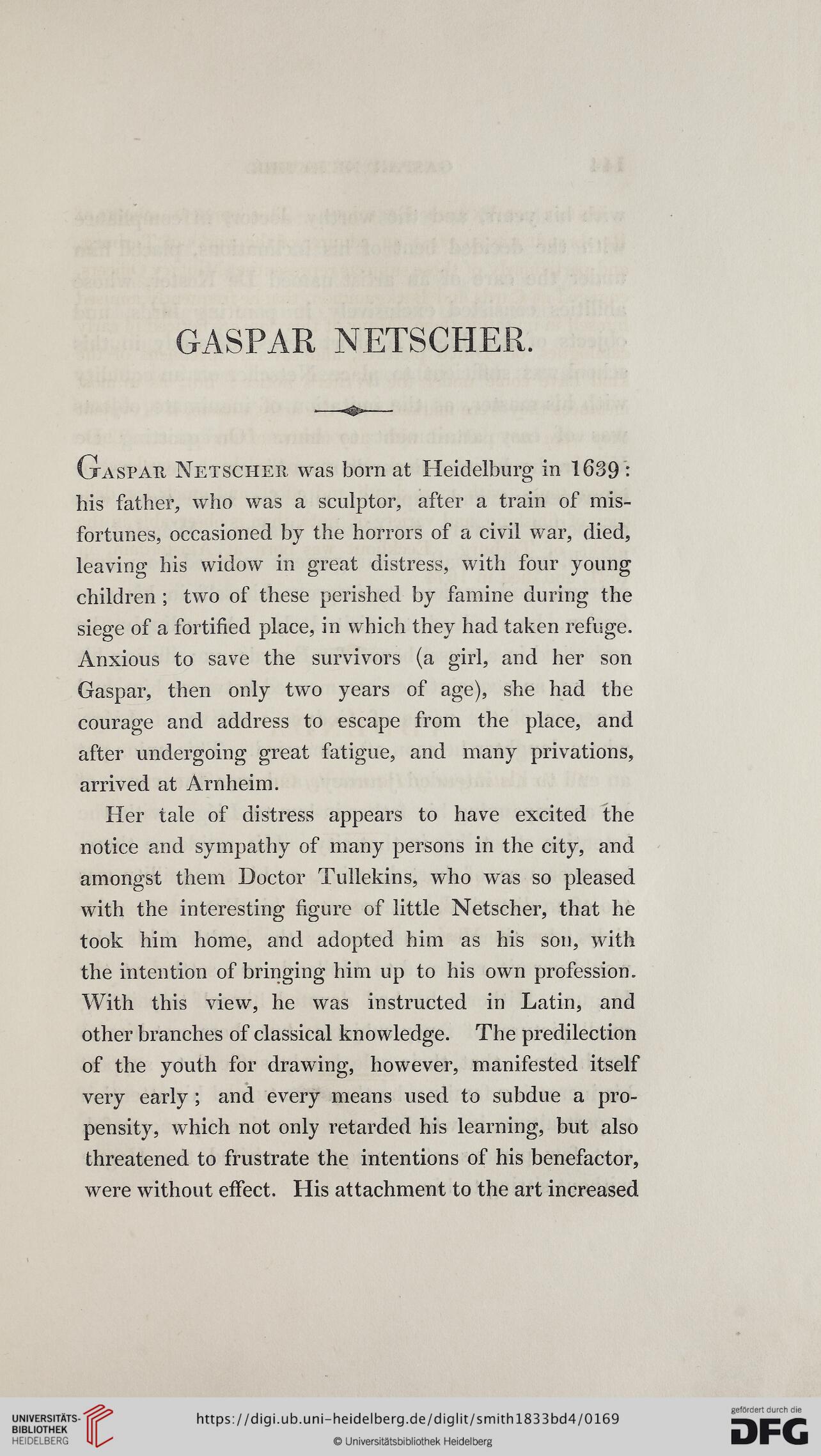GASPAR NETSCHER.
Gaspar Netscher was born at Heidelburg in 1639 :
his father, who was a sculptor, after a train of mis-
fortunes, occasioned by the horrors of a civil war, died,
leaving his widow in great distress, with four young
children ; two of these perished by famine during the
siege of a fortified place, in which they had taken refuge.
Anxious to save the survivors (a girl, and her son
Gaspar, then only two years of age), she had the
courage and address to escape from the place, and
after undergoing great fatigue, and many privations,
arrived at Arnheim.
Her tale of distress appears to have excited the
notice and sympathy of many persons in the city, and
amongst them Doctor Tullekins, who was so pleased
with the interesting figure of little Netscher, that he
took him home, and adopted him as his son, with
the intention of bringing him up to his own profession.
With this view, he was instructed in Latin, and
other branches of classical knowledge. The predilection
of the youth for drawing, however, manifested itself
very early ; and every means used to subdue a pro-
pensity, which not only retarded his learning, but also
threatened to frustrate the intentions of his benefactor,
were without esfect. His attachment to the art increased
Gaspar Netscher was born at Heidelburg in 1639 :
his father, who was a sculptor, after a train of mis-
fortunes, occasioned by the horrors of a civil war, died,
leaving his widow in great distress, with four young
children ; two of these perished by famine during the
siege of a fortified place, in which they had taken refuge.
Anxious to save the survivors (a girl, and her son
Gaspar, then only two years of age), she had the
courage and address to escape from the place, and
after undergoing great fatigue, and many privations,
arrived at Arnheim.
Her tale of distress appears to have excited the
notice and sympathy of many persons in the city, and
amongst them Doctor Tullekins, who was so pleased
with the interesting figure of little Netscher, that he
took him home, and adopted him as his son, with
the intention of bringing him up to his own profession.
With this view, he was instructed in Latin, and
other branches of classical knowledge. The predilection
of the youth for drawing, however, manifested itself
very early ; and every means used to subdue a pro-
pensity, which not only retarded his learning, but also
threatened to frustrate the intentions of his benefactor,
were without esfect. His attachment to the art increased




